Not only have we built a product around A/B testing and conversion optimization, but we are always looking for ways to run experiments on our website.
Recently, we got our entire team to actively research and contribute ideas for optimization on our website and ran multiple tests. This post is a narrative of what we did after.
Download Free: A/B Testing Guide
Who Is This Post for?
This post will help SaaS growth-hackers, marketers, and optimization experts to predict the business value from an a/b test.
The aim of this post is to not only share the tests we ran on our website, but also introduce a revenue-based framework that predicts the business impact of an A/B test and prioritizing on the basis of it.
Revenue-Based Optimization
Need for a Model
After we propelled our team to suggest ideas for testing, we had more than 30 hypotheses looking at us, but no distinct way of knowing which of these to take up first. Of course, there is a range of prioritizing frameworks available, but we particularly wanted to look at the ones that would directly impact our revenue.
This framework helped us project the potential impact on the revenue from each test. Here’s what we did:
Step 1
We decided to identify high-impact pages and winnow the pages that were not as important for our business, that is, pages where no goal conversions take place. We looked at Google Analytics for pages with the:
- Highest Amount of Traffic
(We used “New Users” to nullify visits by existing customers.) - Highest Number of Goal Conversions
(Goal conversion, which contributes to your overall business goal, is the main goal for your website. In our case, this meant all qualified lead-generating forms. A free trial or request a demo qualifies a visitor as a lead with a genuine interest in our product; or, as the industry popularly refers to it, a Marketing Qualified Lead.)
This gave us a list of pages which were high-value in terms of, either traffic generation or last touch before conversions.
We identified the following key pages:
- Free-trial page
- Request-a-demo page
- Homepage
- Pricing page
- Features page
- Blog pages (All)
- Contact-us page
Step 2
Our main objective was to project an estimated increase in the revenue due to a particular test. If your test increases the conversion rate by say 20%, what would this mean for your business and, in turn, the revenue?
Note: You should use data from the recent 3–6 months, and the average (mean) of each stage of your Marketing funnel, which are explained below. This is to accurately reflect what to expect from your testing and be relevant to your business.
For each of the “Key Pages” we identified in the first step, we also dug out the corresponding numbers at each funnel stage. We’ve explained each stage of the funnel and how it is calculated:
a) Key Page Traffic: The total number of pageviews per Key Page (new users in our case). You can find the data in Google Analytics.
b) Total Conversions: The total number of leads generated from each particular page. If there is an additional qualification your company follows, source this data from your preferred CRM or Marketing Automation software. For example, at VWO, we use Clearbit to qualify our leads in Salesforce.
c) Opportunities: The total number of opportunities generated for your sales team. This data will be available in your CRM; make sure to count qualified opportunities only.
d) Customers: The total number of customers created in a month.
e) MRR (New): Or monthly recurring revenue, means revenue booked on a monthly basis; you can use this to estimate annual recurring revenue, or ARR, as well.
Step 3
Now that we had all the numbers needed in our arsenal, I decided to calculate some more internal benchmarks. This gave us the performance of our marketing and/or sales funnel.
- We computed the conversion rate of a particular page, using the following formula:
Existing conversion rate = (Total Conversions Key Page Traffic); this is represented as % - The conversion of your leads into opportunities:
(Opportunities ÷ Total conversions) × 100, represented as % - The conversion rate of opportunities into customers:
(Customers ÷ Opportunities) × 100, represented as % - The average revenue per user or ARPU:
Total MRR ÷ Total number of paying customers
This is what our final dashboard looked like: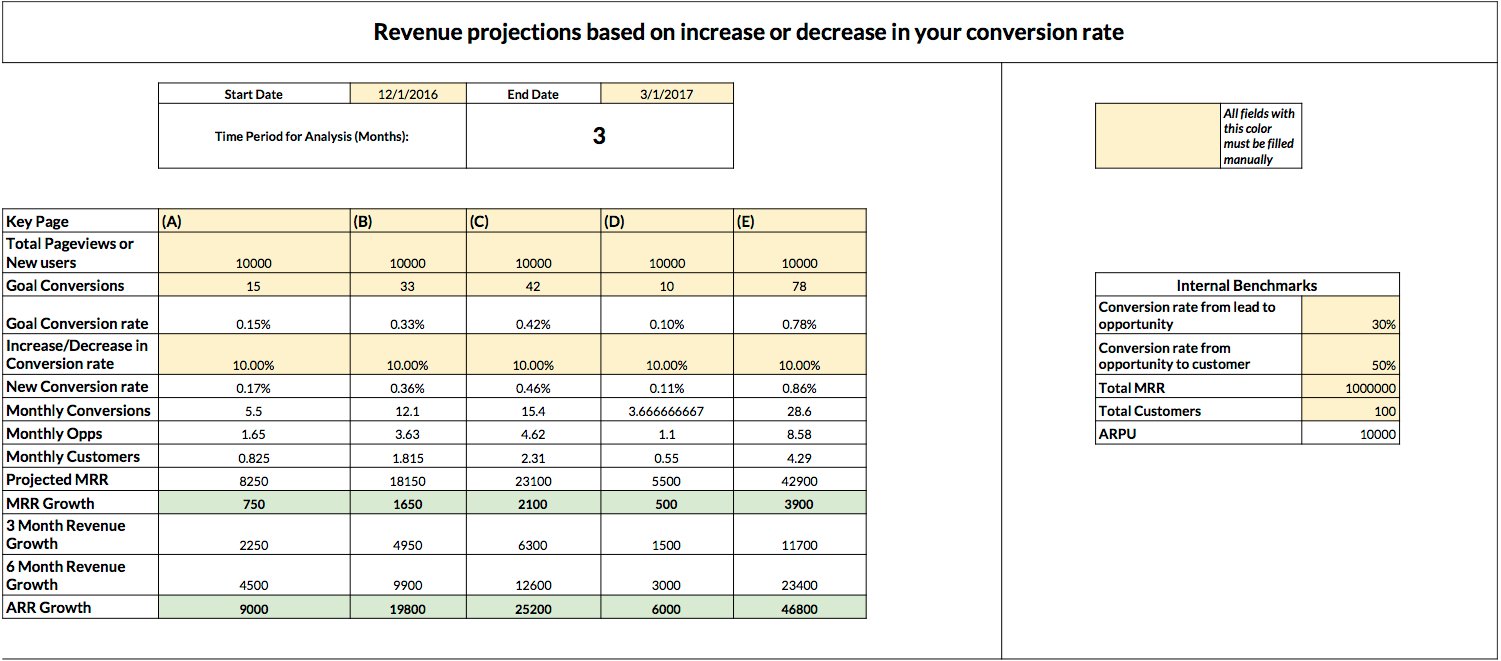
The model uses all of that data and projects how much revenue increase or decrease you can estimate based on your test results. This estimate can give you a good idea of where to begin or prioritize your testing.
Step 4 (Optional)
This is where it may get tricky. At VWO, we sell both Enterprise plans and Standard plans. So to be fair, we must estimate each cohort with separate data and individual conversion rates.
For example, Opportunity creation % for an Enterprise plan may be lower, but a Standard plan is easier to convert. You may want to decide what type of plan do you want to focus on.
We, for instance, used website traffic and Alexa rank as the benchmark for lead qualification. We attributed more value to the leads that came in through key pages and prioritized them.
This led us to the next step, which is the qualification rate of the said lead of high value. This rate may be in the range 30–50%, depending on your definition.
It was interesting to note that each page had a different qualification rate. For example, we get better quality leads from our Request a demo page than we do from our free trial or blog post page.
Download Free: A/B Testing Guide
Tests Conducted:
After we had the model in place, we played around with the increase or decrease in our conversion rates. This was to identify what would be our best optimization opportunities?
The free trial pages and the home page were among the high-priority pages, in terms of the impact of revenue. (Unfortunately, I can’t share the exact numbers with you.) We first looked at the hypotheses on the free trial page:
Test 1 – Free Trial Page
Our hypothesis was “Illustrating VWO features and social proof on the free trial page will prompt users to sign up for the free trial.”
Here is a screenshot of what it looks like in VWO.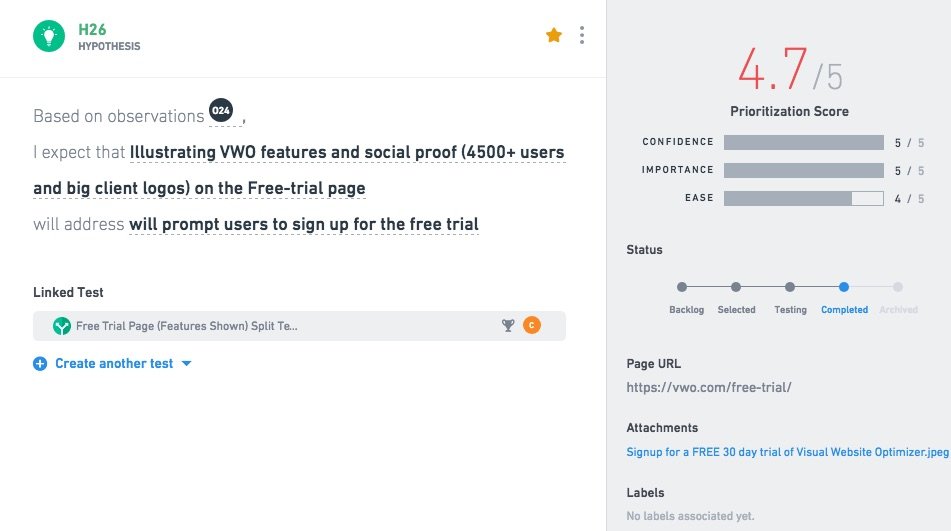
Bonus tip: VWO has recently launched a new capability called PLAN that lets you manage and prioritize your testing hypotheses. To learn more about this capability, visit the VWO Plan product page.
This is what the control looked like:
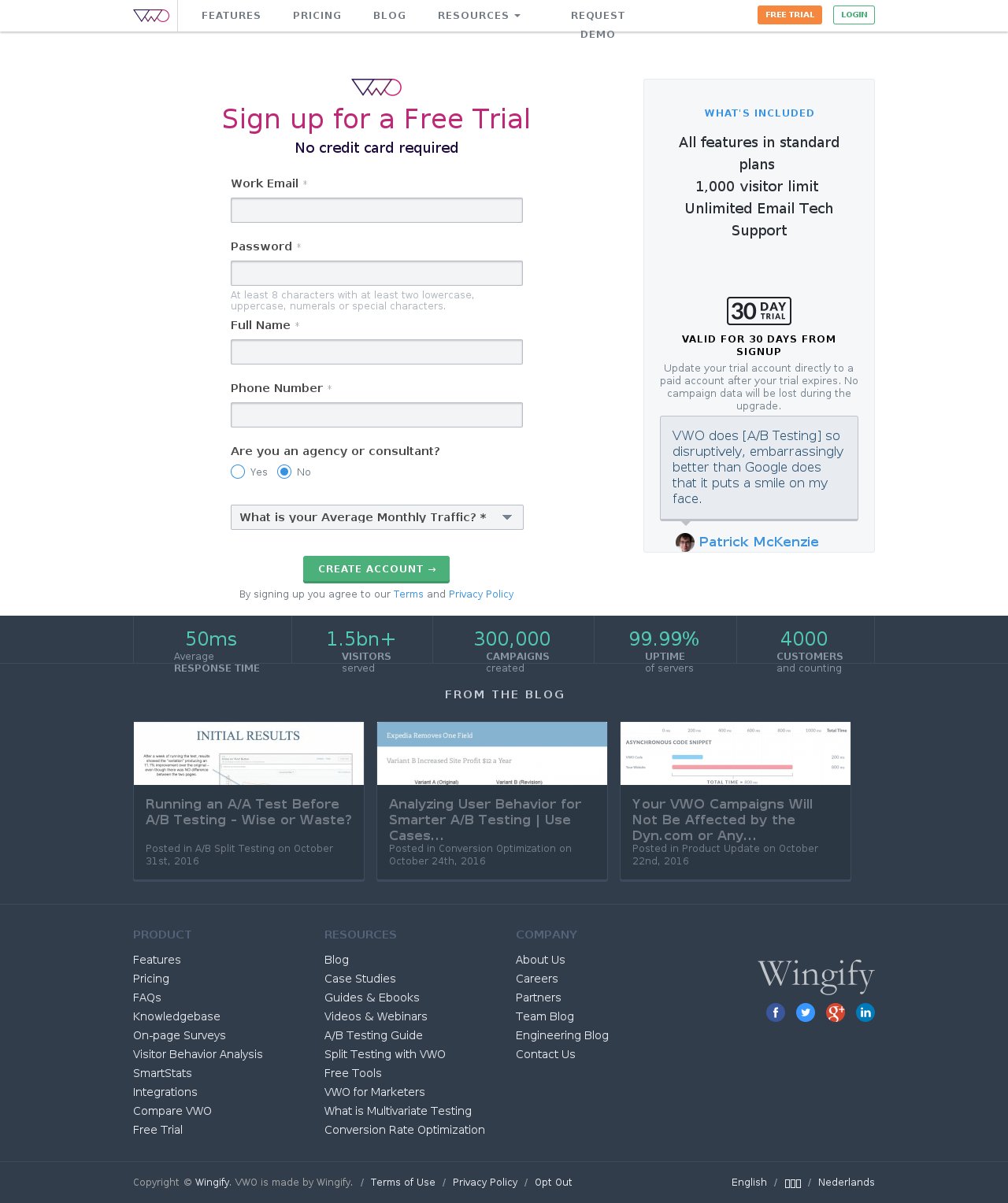
Our heatmap data also showed a lot of users clicking the features page after accessing the free trial page.
Screenshot of heatmap data:
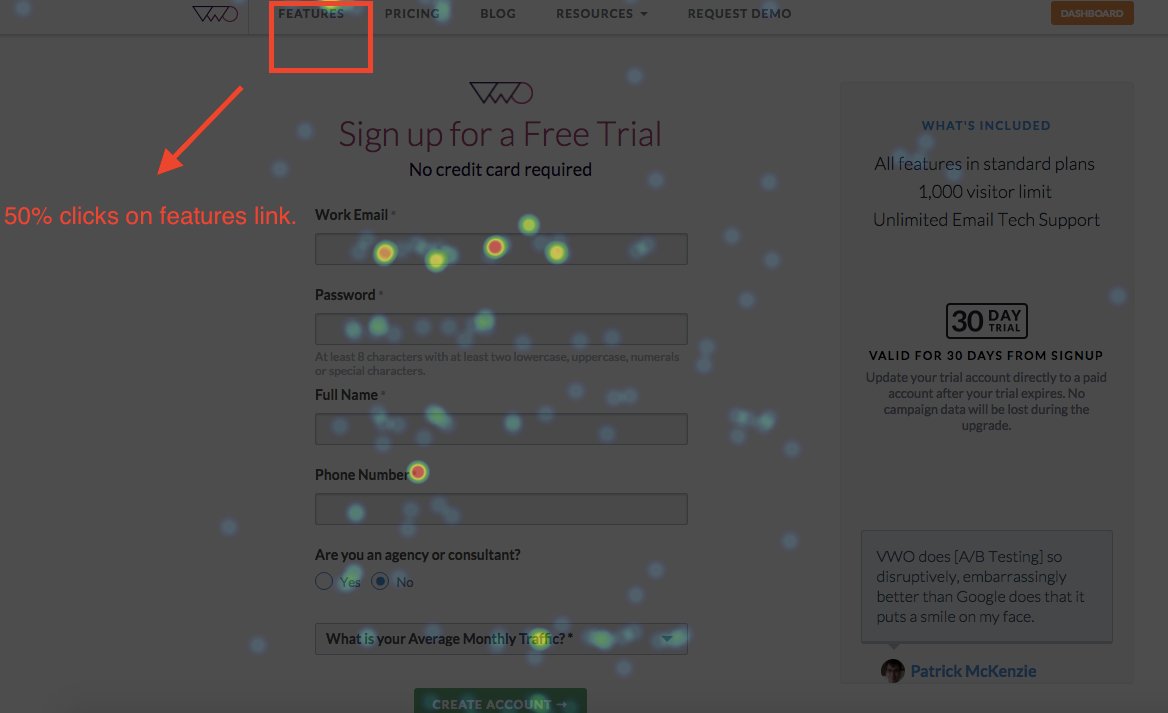
We created a variation which included the features we offer to solve this issue. Here’s a screenshot of the same.
This is our current free trial page:
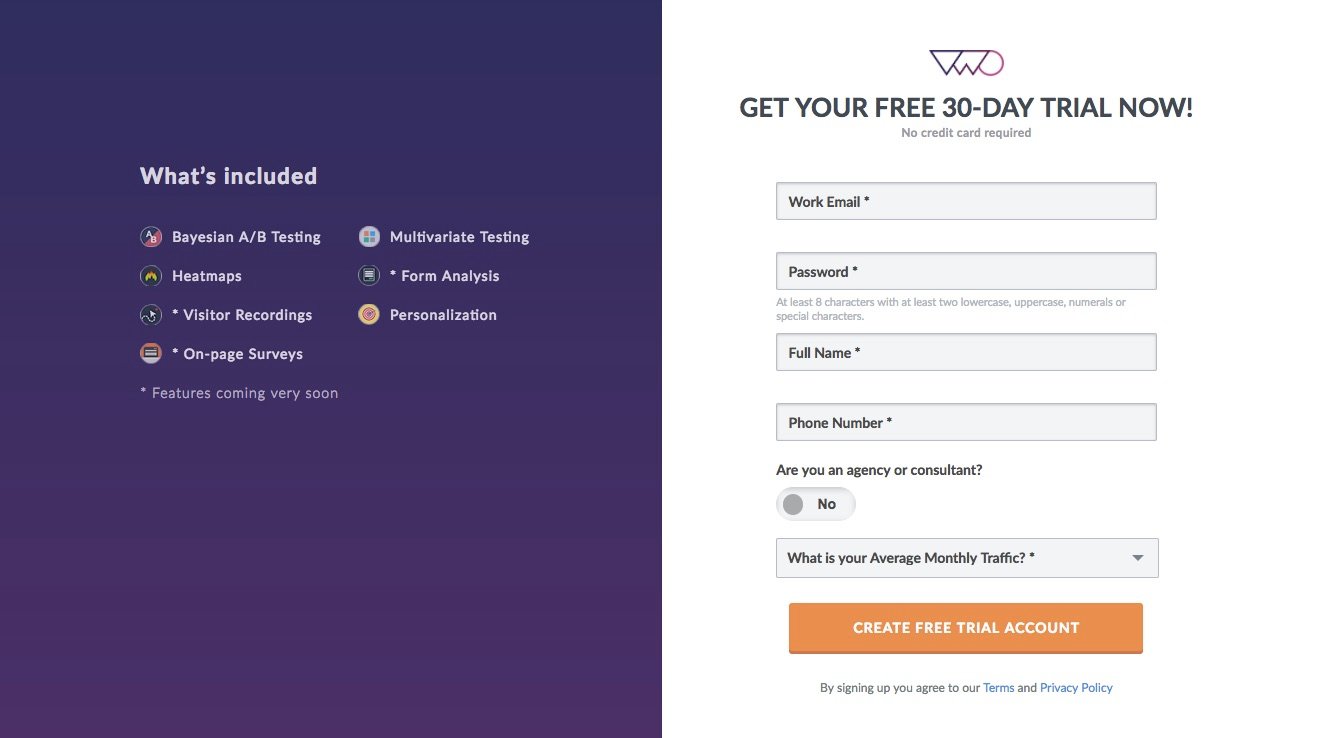
We ran the test for over 2 months. The result was an increase of 6% in our conversion rate, which led to increased revenues.
Test 2 – Request a Demo CTA (A/B Test)
The main CTA on the homepage has been the free trial CTA. The headline on the homepage was “A/B Testing Software for Marketers.”
The hypothesis for the test was “We will get more qualified leads through a request a demo CTA on the homepage.”
This is what the control looked like:
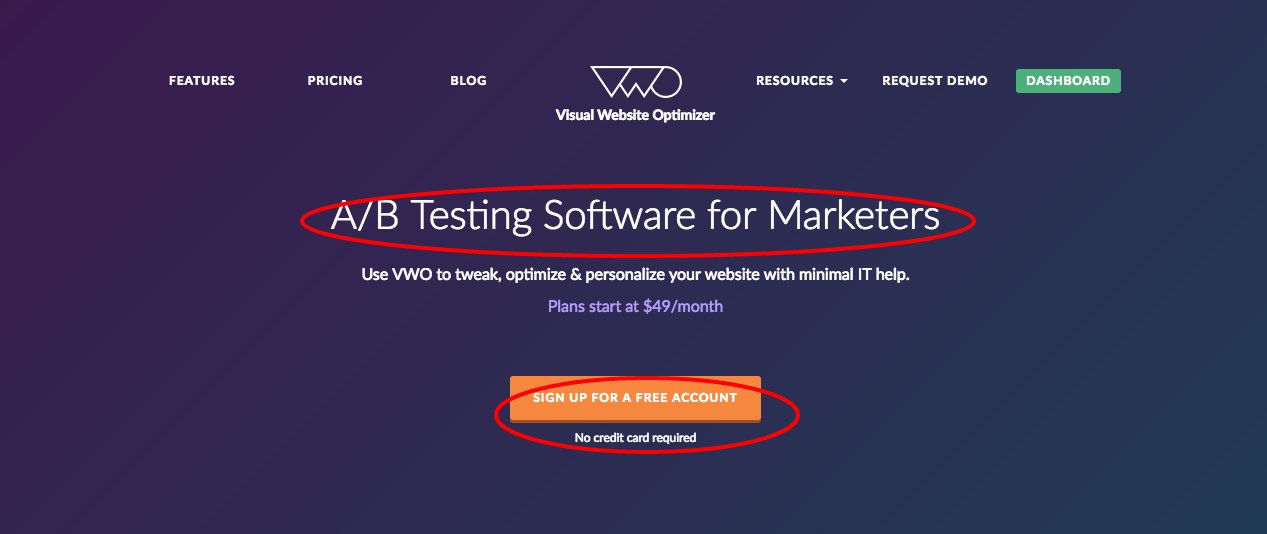
We came up with a more targeted copy and changed the existing CTA to Request A Demo. Here is what the variation looked like:
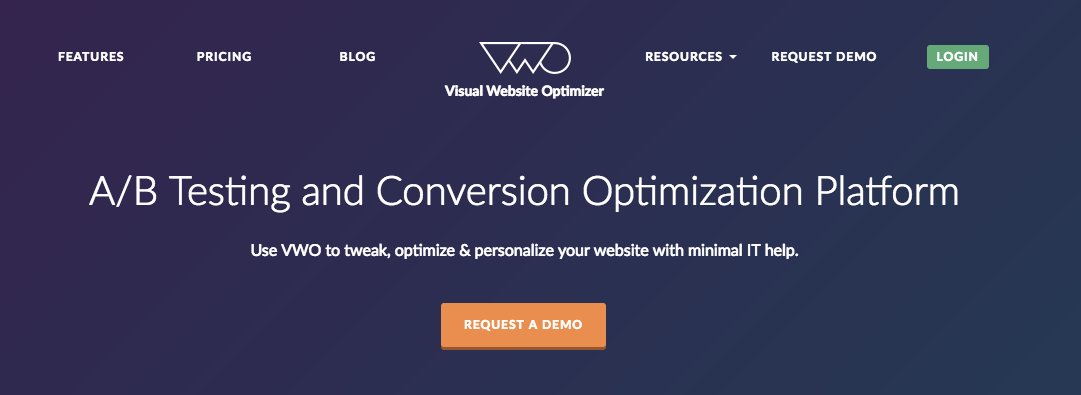
We also wanted to change our positioning due to our foray into Conversion Optimization. The results from this test were that our variation beat the control and had more than 31% improvement in the conversion rate.
Based on the first example, we have already implemented the new free-trial page as our main free-trial page now. Based on the second test, we updated our home page.
All in all, this model helped us correctly predict the best optimization opportunities, make our testing better, and more strategically aligned to business goals.
Let me know your experience with this model and how you go about testing.
Would love to know your feedback on this. Please email us at [email protected]!
Note: The author owns screenshots used in the blog.
]]>That’s incredible for a reader who’s spoiled for choice, but where do we humble writers begin?
Content is the cornerstone of inbound marketing and we all know how difficult it is to write something worthwhile! So most of our time goes into writing and we don’t leave enough time for its promotion — getting it out to the right audience and building traction. I forgot to mention all of this needs to be done quickly once published. You need to get the timing right, just like baking a cake.
Download Free: A/B Testing Guide
I have an example below from our own blog that shows what impact it may have had, to be honest, we must give credit to the content quality since it may have been different but promotion was done for one and not for the other.
Here’s the comparison:
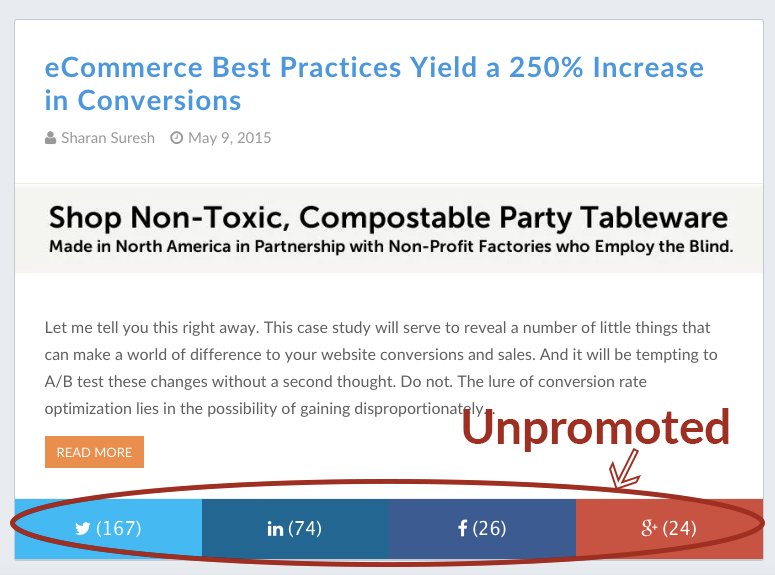
Unpromoted Post
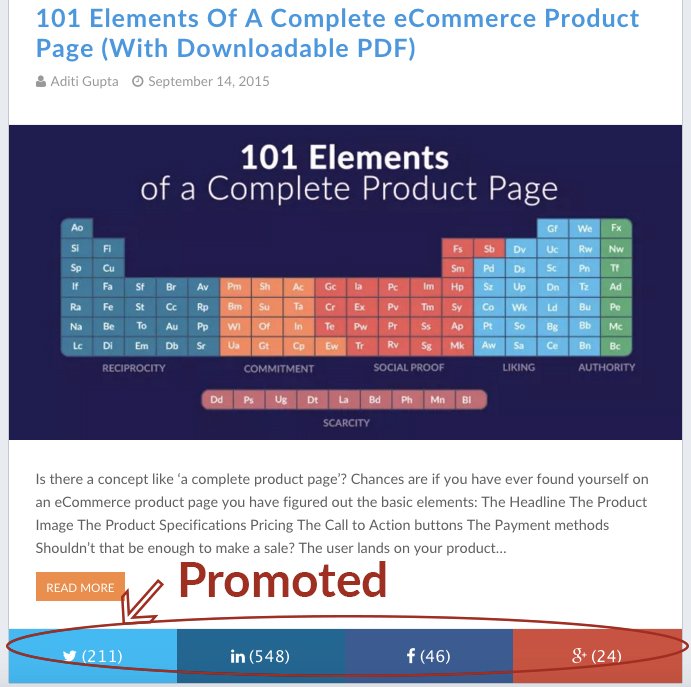
Promoted Post
It’s shown to be an important process that has boosted the traction of a lot of our own posts. I think of it as a nitrous boost for your blog’s journey around the web.
Don’t worry in case you haven’t been able to achieve the same results with your content promotion. Some angels out there have been looking out for us and have spent time and effort to build great solutions for us, I’ve discussed some of those solutions here to help you level up your content promotion game.
Let’s begin:
1) Mailshake.com
This baby is still in the beta stage, its goal is simple; you want to contact your influencers but:
1. You don’t have their email ids and let’s say by some luck you get them,
2. You don’t want to waste time sending individual emails, because response rates for cold emails are very low, so you need to bulk up the number of emails you send. Let’s face it, cold outreach can seem like shooting arrows in the dark.
3. You need to do social outreach too, through LinkedIn, Facebook and Twitter but again, how many tweets will you send out individually?
Mailshake.com (earlier ContentMarketer.io) will help you resolve each of these issues like so:
The first step is to find influencers, you can do so by researching a page that has your relevant influencers mentioned such as a digital marketing event page or a blog post on social media influencers for eCommerce. From here you simply scan the post you want, Mailshake.com does the rest.
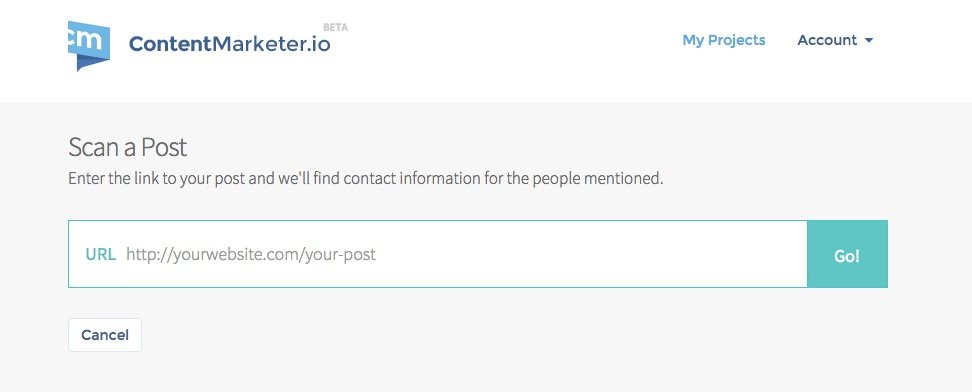
Voila! You’ve got their email ids, Twitter handles, and even contact form URLs; basically, the whole red carpet! (You can even upload .csv files in case you’ve got contact lists.)
You can craft emails (or use inbuilt templates) and reach out to your influencers in batches, after clicking ‘send’ your email campaigns will be tracked for opens and clicks. This is great to gain insight on who is more responsive and learn about who you can contact again.
Similarly, for Twitter, you can tweet out to them or send direct messages.
The screenshot illustrates the interface where the entire process takes place.
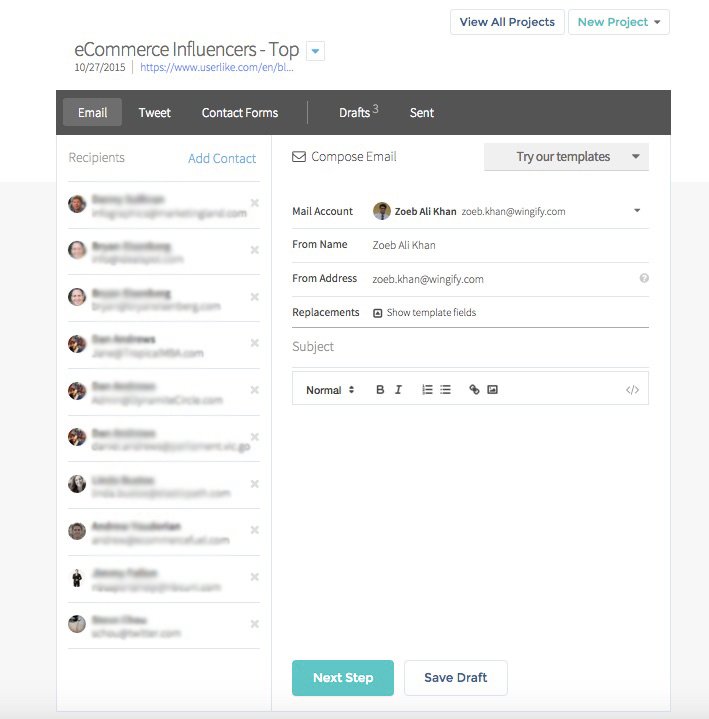
What’s even cooler:
The team is easy to reach in case of queries, they are receptive to your suggestions for the product. Colin from Mailshake.com (who’s a co-founder along with Sujan Patel) helped me out and added an image editor within 24 hours.
Here is the conversation I had:
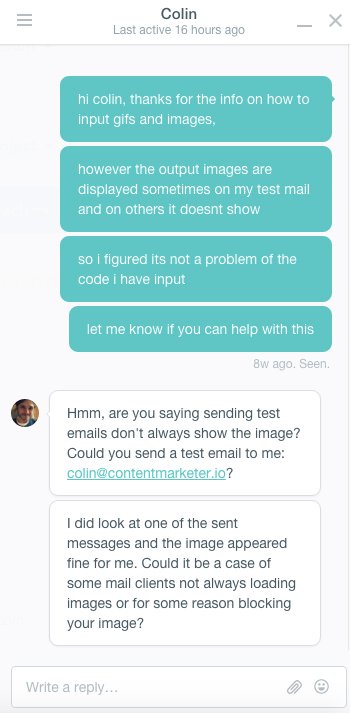
It spoon-feeds the process of cold outreach to influencers and you can export all your data into .csv format so that your boss can be happy with his excel sheets later in the day.
2) Followerwonk
From the great minds of the wizards of Moz, comes this beauty. Followerwonk helps you find Twitter influencers based on keywords in their bios (or profiles), you can compare different users to find which ones are more relevant and useful to your needs – this is perhaps the most vital tool because a focused approach towards promotions is the thumb rule in B2B.
Using Followerwonk is as easy as I dare say, Google search.
Once you’ve got your list, filter them according to the number of followers or tweets they send, or even social authority rank.
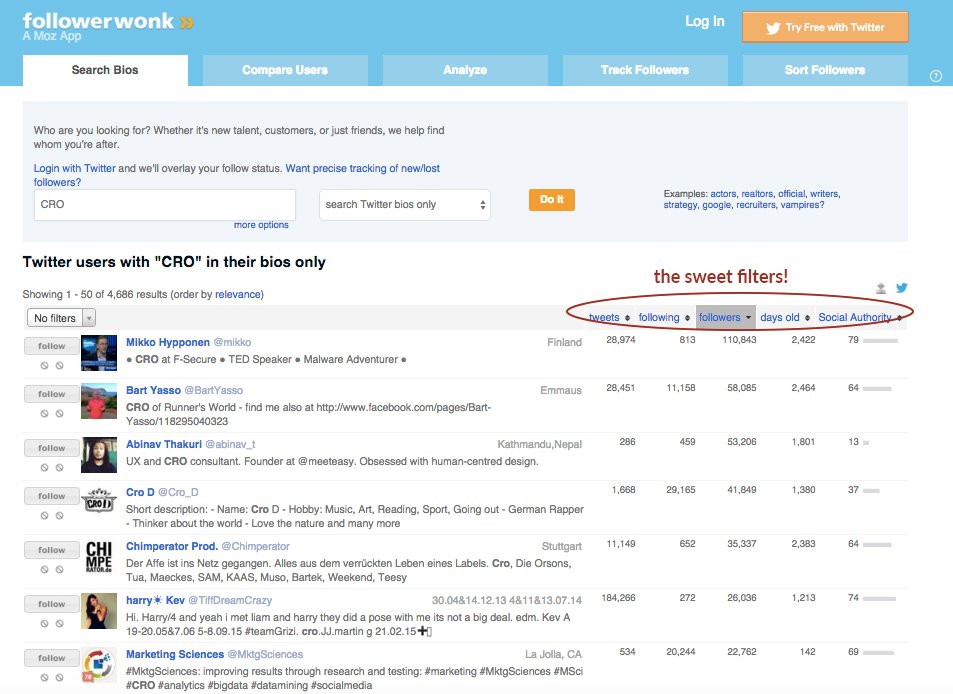
You can even make custom filters based on your Twitter profile that you’ve synced with Followerwonk. For example, contacts who are my followers, and not followed by me can be pulled out. Basically, it gives a whole combination of possibilities with your Twitter handle.
Download Free: A/B Testing Guide
3) Buzzsumo
Let’s begin with an example:
I searched for the “Mobile App A/B testing tool” because it’s a topic I wanted to find what others had written on. Here’s where Buzzsumo comes in.
What does this tool do?
- Search for any topic and it’ll show you the most popular content for that topic.
- Enter a URL and Buzzsumo will show you how much the link has been shared – this tells you how well the topic has been covered and its performance so that you know what is worth writing about. It also helps you avoid repetition by helping you craft a piece that provides distinct value.
- Check out backlinks, so you know which websites to reach out to and expect good news from, or simply find websites that write about similar topics and will be interested in your content. Furthermore, it shows you a list of sharers in the ‘view sharers’ tab.
- Buzzsumo, too, like Followerwonk, helps you find influencers. See the influencer tab on top in the screenshot below:
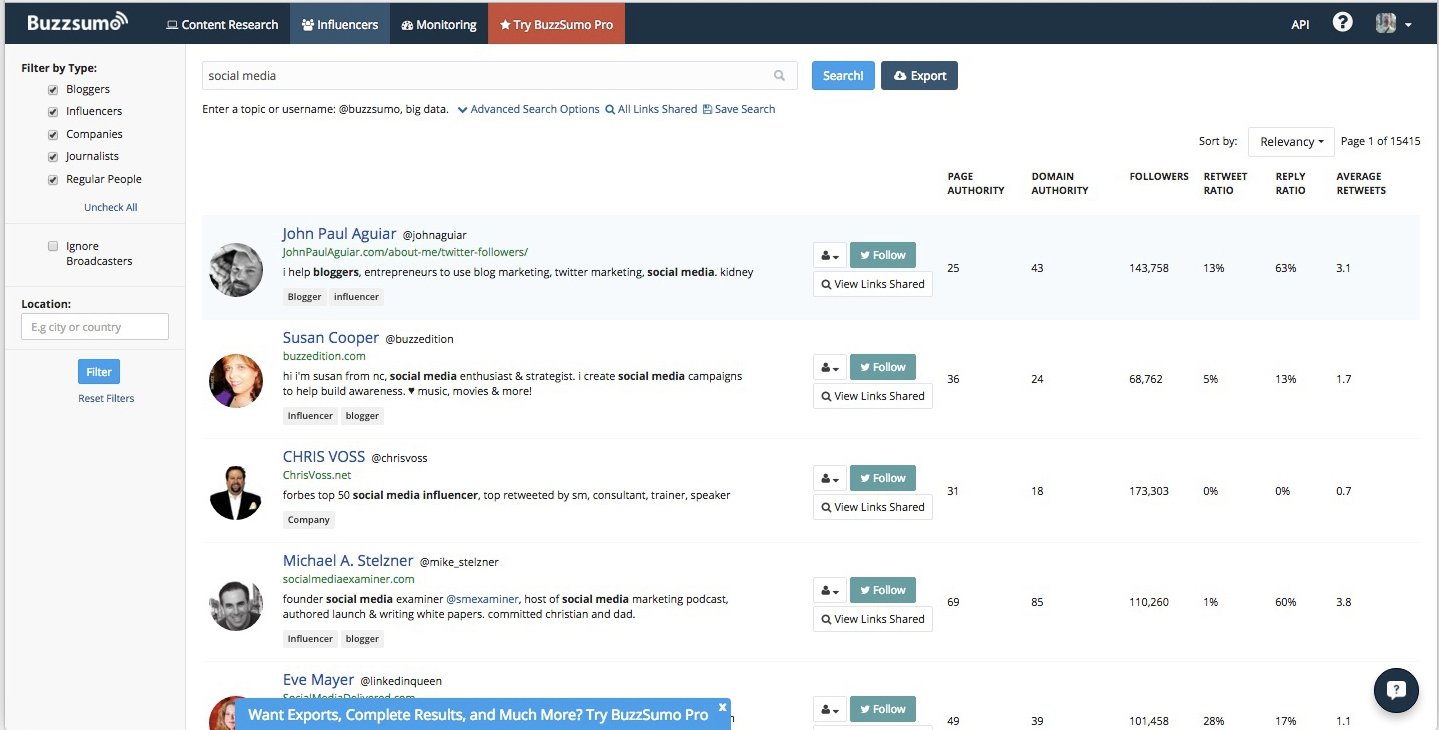
Buzzsumo offers a 14 day free trial for its pro account wherein you can get access to an unlimited number of influencers and posts.
4) Open Site Explorer
It’s all about competitors, and OSE fits the profile perfectly to help with your competitor research.
You use OSE to scan your competitor’s post/pages, posts you took inspiration from, or just about any page. Once scanned, you get the list of inbound links to find backlink opportunities.
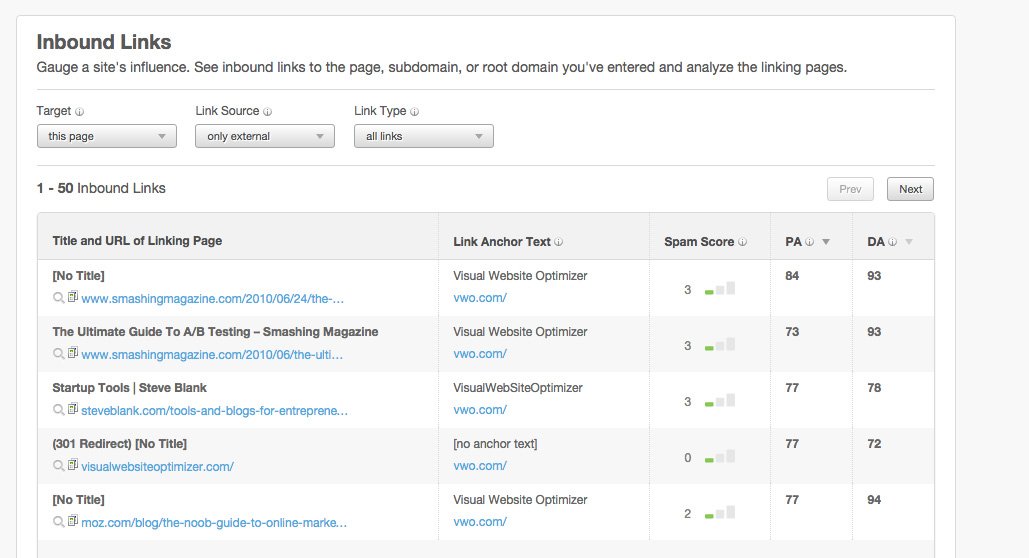
Similarly, if you plug in your own page URLs, OSE provides you with metrics for the links you got from around the web. It’s useful for finding those spam websites that might have linked to you and disavowing them.
In essence, OSE helps you monitor your website’s health and steer clear of bad neighborhoods.
The best way to describe this tool is that it is akin to a flaming torch in a dark span of endless data!
I almost forgot to mention how they constantly update their data adding close to 200 million+ URLS every 60 minutes.
5) Buffer
Buffer makes social media management easy. All of us need to reach out to influencers through Twitter but some constraints we face are tweeting at the opportune time and composing tweets individually.
Buffer lets you schedule and more! The analytics section is super easy to read, with pointers on how many clicks you’ve been getting and even the possible number of followers that will see your tweet. The insights section is available for paid users which is a goldmine, and god knows I’m a sucker for graphs.
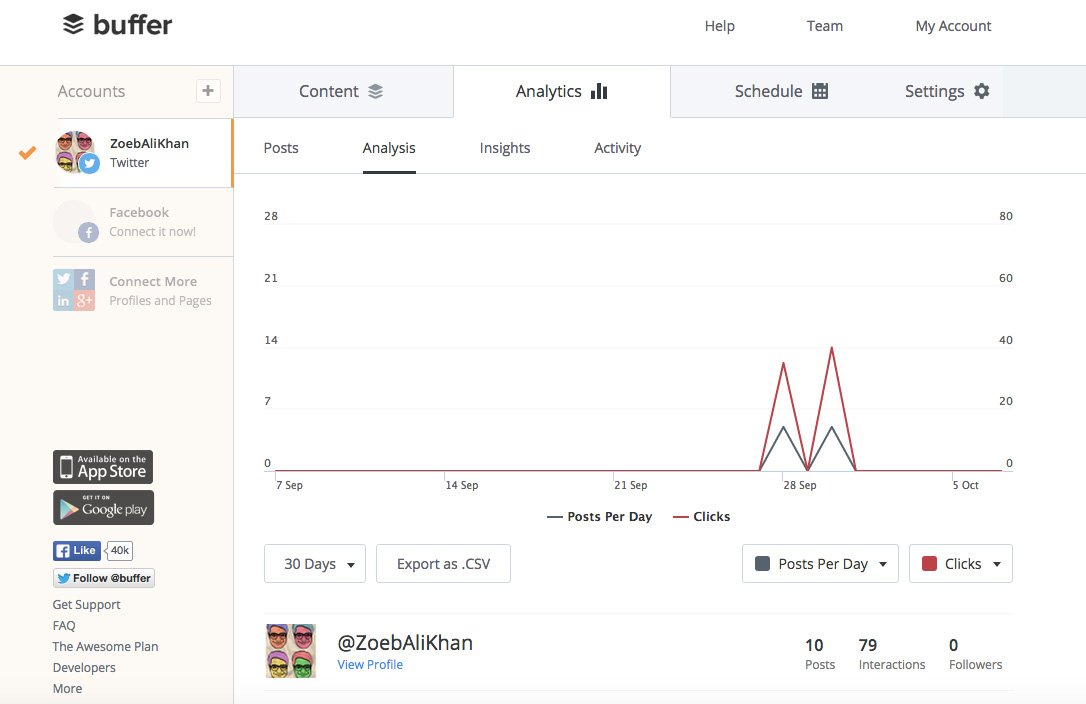
The internet is dark and full of tweets, Buffer sorts them all away! – Cheesy reference but it’s true!
6) Outbrain
Do you care about having your content on premium websites? Yes? Read On!
No? Still read on.
To put it simply, Outbrain is a content recommendation platform that helps businesses and brands acquire more traffic by promoting their content on publisher sites with relevant traffic.
Getting Outbrain is like buying your way into a marketplace all content marketers want to be a part of.
Outbrain uses behavioral targeting to recommend interesting articles, slideshows, posts, photos or videos to a reader rather than based simply on content that may be similar.
The global audience reached by Outbrain each month is 557 million.
Outbrain is currently used by small and large web publishers, media agencies, brand and marketing managers, book publishers, PR companies, start-ups, small businesses, travel, and hospitality companies, and app developers for as low as $15 a day!
Here’s outbrain in action:
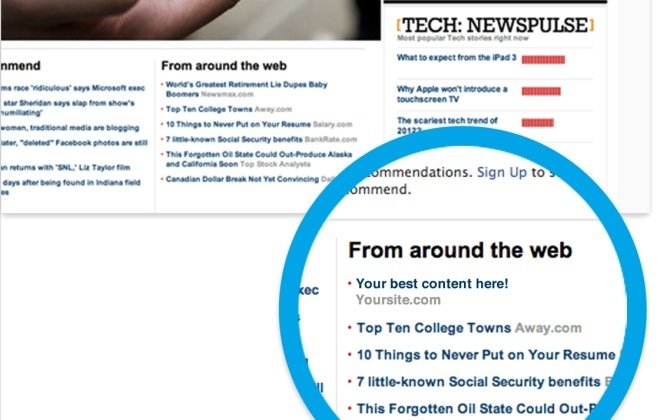
It’s also been known to work better for B2C content or that with broader appeal.
7) Curata
Curata has two platforms on offer the Content Curation Platform and a Content Marketing Platform. First the CCP – a platform that gets you content from around the world and lets you publish it with a single click. Your objective in using this software is to be able to publish more frequently, save time on your research find third-party content, and syndicate it.
Here’s how you can use it:
Search for the kind of content you want such as long form or short form. Then fill in keywords, and Curata gives you a list of posts. Now it’s up to you to decide how relevant it is.
Curata learns what kind of content you are on the lookout for and then begins to recommend the content of a similar kind in the future.
Furthermore, you can set other parameters according to your needs. For example, search only for tweets with the word ‘CRO’ mentioned, or only sources you want such as TechCrunch, and VentureBeat.

Finally, you can publish on various channels (email, social, blog) with one click and schedule how often you want the posts to go out.
Next, the CMP – The editorial calendar is in view of the entire team and can be used in different formats such as a spreadsheet-style for you oldies out there or google calendar style. I was especially impressed by the analytics section, an example of how you can use it: Categorize your posts according to your authors, see which ones are generating you the most revenue, Curata tracks the performance of the post, sees how many leads which came in converted, that is revenue generated through the post. Let’s just say it’ll even be easier for you to spot who to fire and who to give a raise to.
These are the tools I found useful, I’m sure there are more out there. What other tools have you found useful for us content marketers? Reach out to us at [email protected] with your favorite tools!
]]>